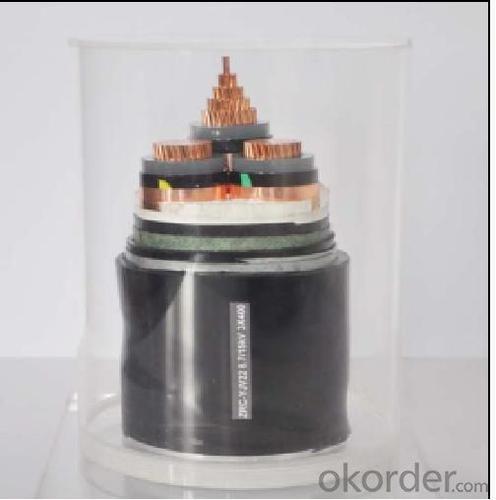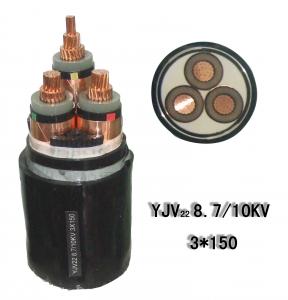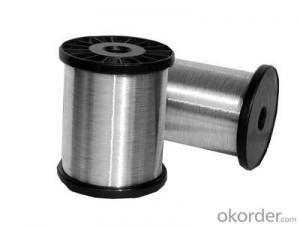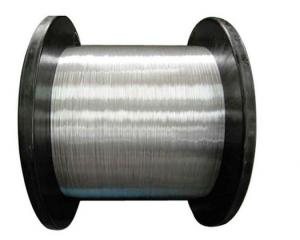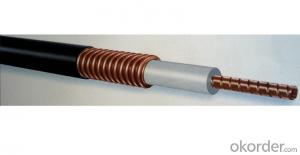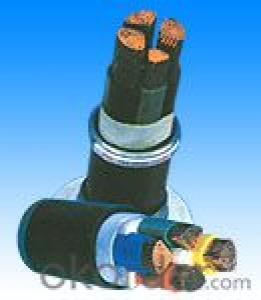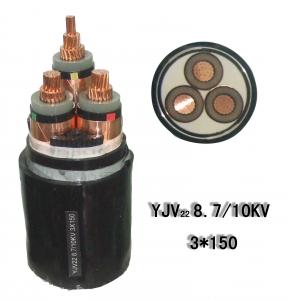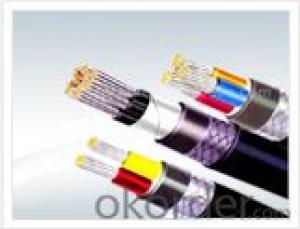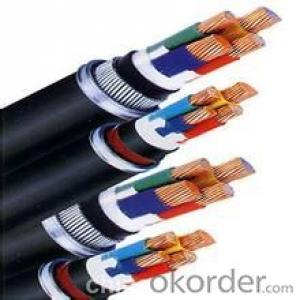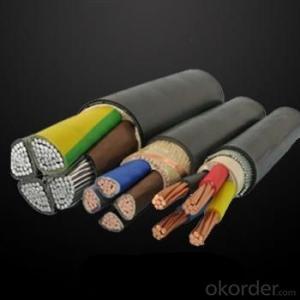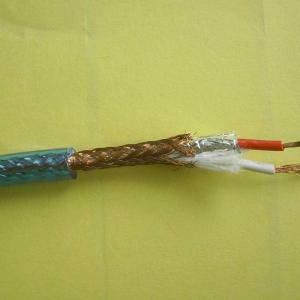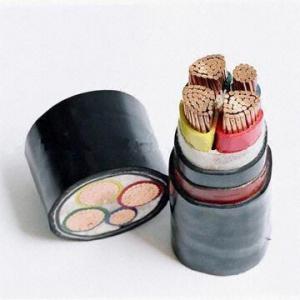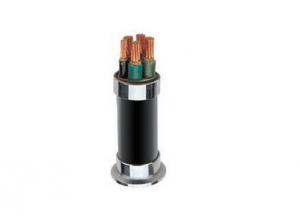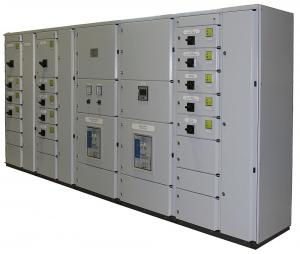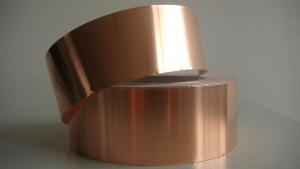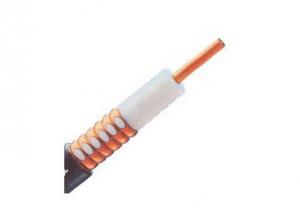Power Cables-0.6/1 KV
- Loading Port:
- China Main Port
- Payment Terms:
- TT OR LC
- Min Order Qty:
- -
- Supply Capability:
- -
OKorder Service Pledge
OKorder Financial Service
You Might Also Like
Copper/Aluminium conductor , XLPE/PVC insulation , PVC/LSZH outer sheath power cable.
Voltage rated: 0.6/1KV
Temperature: Not exceed 90°C
Bending radius: Single cord 20*OD
Multi cords 15*OD
Rated Uo/U is 600/1000V and 450/750V.
Allowed continuous working temperature of conductor is 90 .
Installation temperature of cables should be no less than 0 .Allowed bending radius should be no less
Maxi mum temperature of conductor (the longest continuous time should be no more than 5s) should be
no more than 250 .
Conductor construction and D.C.Resistance should be in accordance with Table 3
Insulated core can be identified with different colors and different numbers. The nominal
thickness o f insulation i s 0.7mm. The thinnest place o f insulation should be no less than
90%-0.1mm of nominal value.
- Q: What is the installation of the power cable protection grounding box and the direct grounding box?
- Regardless of multi-wire or single-core, as long as it is in line with national wire standards, and now the market is not the current market line 60% compliance. To select the regular products, national safety certification, safety standards, a good installation process and the standard of the wire, a local demand for electricity with the appropriate diameter. To ensure that you are comfortable with electricity,
- Q: I have an electrical source 220 Kv or 380 KV at site X and want to pull cables to site Y to privde electricity for this Y site for general lighting and power sockets.So what is the max distance for the cables i can pull from site X without voltage drop affect the voltage or power at site Y.
- For zero voltage drop, the distance is zero. If this is a practical question, you would need to know: 1. How much voltage drop can be tolerated (eg. 1%? 5%? other?) 2. What is the maximum current the cables will need to handle? 3. What is the resistance-per-length of the cable?
- Q: 3 (WDZBN-YJV-4x240 + 1x120) cable how to interpret
- In fact, this is a wrong model! (WDZBN-YJV-4x240 + 1x120) - 3 cables, each copper conductor Conductive cross-linked polyethylene insulated PVC sheathed halogen-free low smoke Flame-retardant fire-resistant power cable 4-core 240mm? + 1-pin ground protection line 120mm?. As we all know, polyvinyl chloride is halogen-free, not "halogen-free". The correct model should be: 3 (WDZBN-YJE-4x240 + 1x120) - 3 cables, each copper conductor Conductive cross-linked polyethylene insulated polyolefin sheathed Halogen-free low smoke Flame-retardant fire-resistant power cable 4-core 240mm? +1 core grounding protection line 120mm?. For more cable knowledge, please search for "Industrial Automation Integrated Cable Solutions" into the Industrial Network.
- Q: I am looking to replace a broken power cable for my DigiTech RP1000 guitar effects board, but I am curious as to whether I need to find a cable specifically for this device, or if I can look up any cable with an output of 9V AC; 1.3 Amps.
- Flexible cables for use at low voltage e.g. for mains adaptors and speakers, are probably good for at least 100 volts. They are usually rated for current, and are well over-engineered, so anything rated from 1 amp up will work fine. I wouldn't use a cable rated for more than, say 3 amps because there will be more chance of a thicker cable shorting out in the plug - there isn't a lot of space between the terminals.
- Q: are there power cables or batteries? Thanks
- I bought the Rocketfish wireless rear speaker kit at BB for $99.99 and I love it. The unit plugs into the back wall behind my couch and you run the wires from it, not the reciever. I'm sure having it wired is the best way, but I have no complaints about my set up. It sounds great.
- Q: so I bought a new power supply to go with my new case and motherboard, and when I recived the new power supply it didn't have a power cable That Plugs into the wall, can I use the one from my old power supply or will I have to get a new one? Cause I tried using it and my pc didn't turn on, or is my power supply that I got possibly dead?
- every power supply I've gotten for years uses completely standard, detachable power cords. I've never yet seen one that will not use the same cords as all the others. Use the one from the old supply
- Q: Will that work, just get the new country's type of power cable? its a 4gb 360 slim
- Just get a power converter and plug it in to that. Much easier.
- Q: I bought a new amp and sub to replace my old ones. I disconnected the battery, unplugged the old amp and plugged the new one in and when I reconnected my battery the power cable began to smoke at all the exposed ends and got very hot. What causes this? Is it because the new amp requires more current than the old one and that is causing it to get very hot? And what is the solution to my problem?Thanks
- What it sounds like is you accidentally connected the wires to the wrong terminals. If current were an issue u would most likely blow a fuse. But dont rule it out, u could just need a thicker gauge power 12v line. And also remember to ALWAYS GROUND the amp. either way, if it is an amp desined for car use, youre batt would never be too much power. If it is a high watt amp, you should look into buying a capaciter. Itll help regulate voltage usage and extend the life of your batt and alternator.
- Q: I'm using macbook air,and the charger is plugged into it,the battery is full right now,so where is the power source from when it's running?Battery or directly from cable?
- Power cable. If the electrical power fails, your laptop will automatically begin using the battery power.
- Q: Two things:1.) Why when we're using an AC to step up the voltage the power has to remain constant?2.) Why is it if we increase the voltage by a factor of 100 we have to decrease the current by a factor of a hundred and therefore I^2R is decreased by a factor of 10,000
- Power is generated at the power station and transferred to the end user your home by means of power cables. Unfortunately, some power is always lost in this transfer process. It's power NOT Voltage OR Current that is required to operate your home electrical appliance. Yes, current and voltages are involved ;but it is the PRODUCT of these two that makes up the power NOT the voltage or current individually. Power = Voltage x Current Power is lost in the cables as heat as given by your i^2R. To reduce the losses then we must reduce the current I. But, if I reduce the current and keep the voltage the same then the power will fall and my kettle/Xbox/curling tongs will no longer work at home. So, to keep the power up when reducing the current I must compensate by increasing the voltage and this means using a step up transformer. Near the homes, a step down transformer is used to reduce it back down again. Since the losses in a cable are a consequence of I^2R heating then it is important to reduce the current as much as possible when transferring power. If we assume the the resistance, R of the cable is constant, then a 10,000 reduction in power (power/10,000) gives P/10,000 = I^2 x R I^2 = Power/10, 000R I = square root of [const x 10,000] I = 100. Then using power = voltage x current reducing the current by 100 means increasing the voltage by 100 to keep the power the same.
Send your message to us
Power Cables-0.6/1 KV
- Loading Port:
- China Main Port
- Payment Terms:
- TT OR LC
- Min Order Qty:
- -
- Supply Capability:
- -
OKorder Service Pledge
OKorder Financial Service
Similar products
Hot products
Hot Searches
Related keywords

